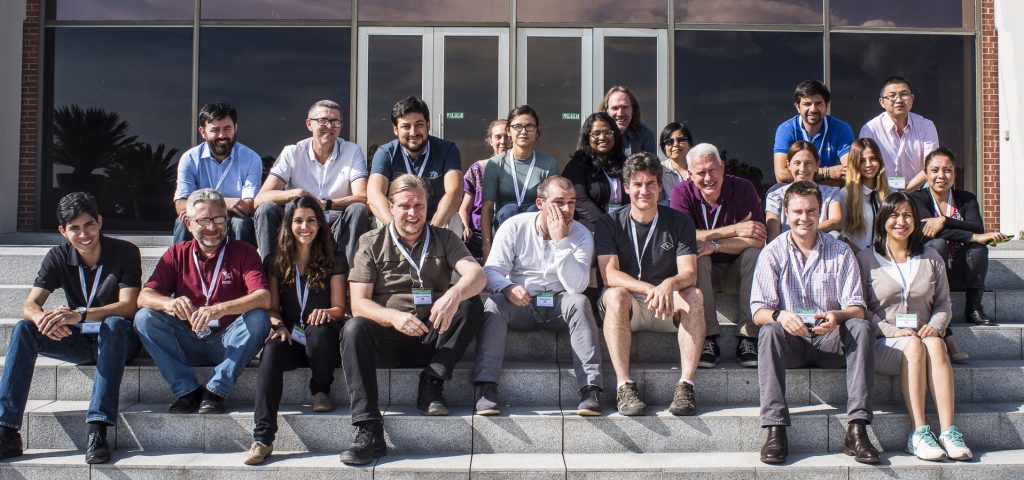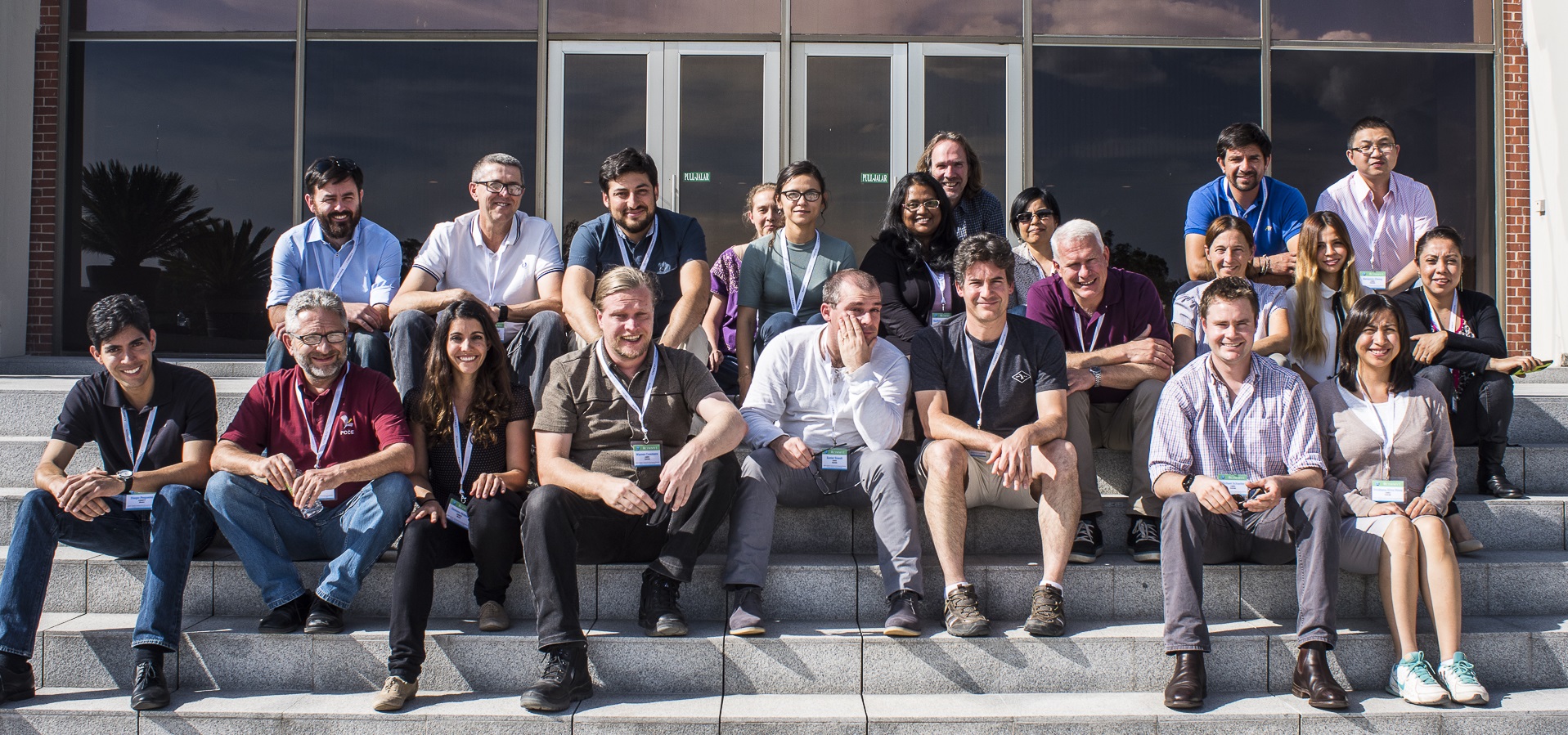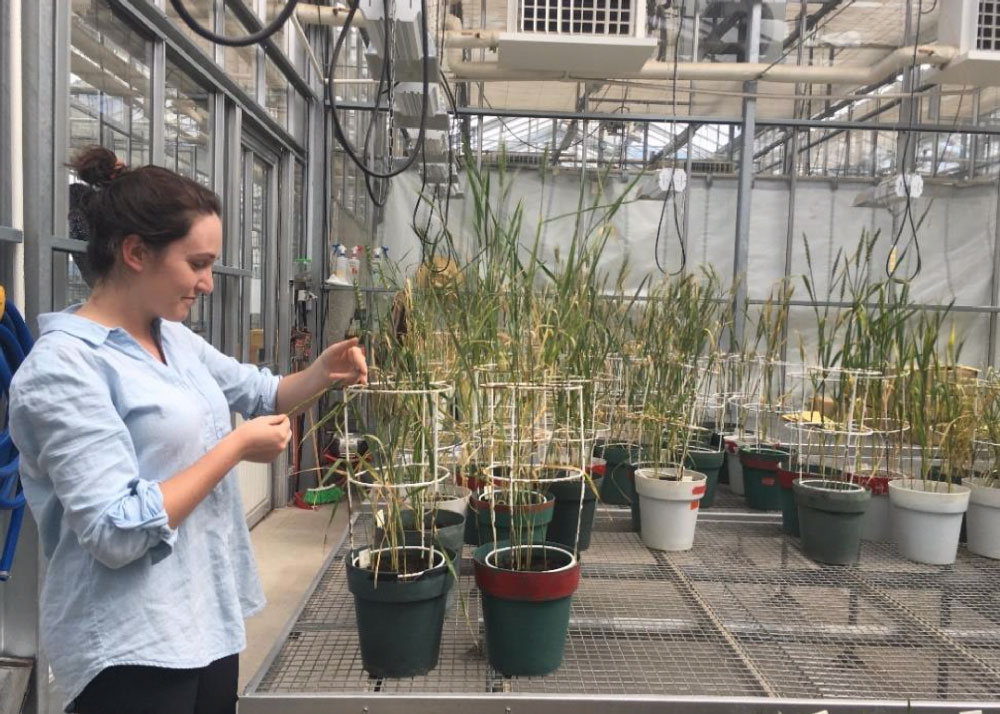 Building on a more than 40-year-old partnership in crop modelling and physiology, a two-day workshop organized by CIMMYT and Australia’s Commonwealth Scientific and Industrial Research Organisation (CSIRO) achieved critical steps towards a common framework for field phenotyping techniques, data interoperability and sharing experience.
Building on a more than 40-year-old partnership in crop modelling and physiology, a two-day workshop organized by CIMMYT and Australia’s Commonwealth Scientific and Industrial Research Organisation (CSIRO) achieved critical steps towards a common framework for field phenotyping techniques, data interoperability and sharing experience.
Involving 23 scientists from both organizations and held at El Batán from 12 to 13 June 2017, the event emerged partly from a 2016 visit to CIMMYT by CSIRO Agriculture and Food executives and focused on wheat, according to Matthew Reynolds, CIMMYT wheat physiologist and distinguished scientist.
“Capitalizing on our respective strengths, we developed basic concepts for several collaborations in physiology and breeding, and will follow up within ongoing projects and through pursuit of new funding,” Reynolds said, signaling the following:
- Comparison of technologies to estimate key crop traits, including GreenSeeker and hyperspectral images, IR thermometry, digital imagery and LiDAR approaches, while testing and validating prediction of phenotypic traits using UAV (drone) imagery.
- Study of major differences between spike and leaf photosynthesis, and attempts to standardize gas exchange between field and controlled environments.
- Work with breeders to screen advanced lines for photosynthetic traits in breeding nurseries, including proof of concept to link higher photosynthetic efficiency / performance to biomass accumulation.
- Validation/testing of wheat simulation model for efficient use of radiation.
- Evaluation of opportunities to provide environment characterization of phenotyping platforms, including systematic field/soil mapping to help design plot and treatment layouts, considering bioassays from aerial images as well as soil characteristics such as pH, salinity, and others.
- Testing the heritability of phenotypic expression from parents to their higher-yielding progeny in both Mexico and Australia.
- Extraction of new remote sensed traits (e.g., number of heads per plot) from aerial images by machine learning (ML) of scored traits by breeders and use of ML to teach those to the algorithm.
- Demonstrating a semantic data framework’s use in identifying specific genotypes for strategic crossing, based on phenotypes.
- Exchanging suitable data sets to test the interoperability of available data management tools, focusing on the suitability of the Phenomics Ontology Driven Data (PODD) platform for phenotypic data exchanges, integration, and retrieval.
The shared history of the two organizations in wheat physiology goes back to the hiring by Dr. Norman E. Borlaug, former CIMMYT wheat scientist and Nobel Prize laureate, of post-doctoral fellow Tony Fischer in 1970. Now an Honorary Research Fellow at CSIRO, Fischer served as director of CIMMYT’s global wheat program from 1989 to 1996 and developed important publications on wheat physiology earlier in his career, based on data from research at CIMMYT. In the early 1990s, Lloyd Evans, who established the Canberra Phytotron at CSIRO in the 1970s, served on CIMMYT’s Board of Trustees. Former CIMMYT maize post-doc Scott Chapman left for CSIRO in the mid-1990s but has partnered continuously with the Center on crop modelling and remote sensing. With funding from the Australian Centre for International Agricultural Research (ACIAR) in the late 1990s, CSIRO scientists Richard Richards, Tony Condon, Greg Rebetzke and Graham Farquhar began shared research with Reynolds and Martin van Ginkel, a CIMMYT wheat breeder, on stomatal aperture traits. Following work at CSIRO with Lynne McIntyre and Chapman, scientist Ky Matthews led the CIMMYT Biometrics Group from 2011 to 2012, collaborating with CIMMYT wheat physiologists on a landmark project to map complex physiological traits using the purpose-designed population, Seri/Babax. Reflecting the recent focus on climate resilience traits, Fernanda Dreccer of CSIRO is helping CIMMYT to establish the Heat and Drought Wheat Improvement Consortium (HeDWIC), among other important collaborations.


 Capacity development
Capacity development 